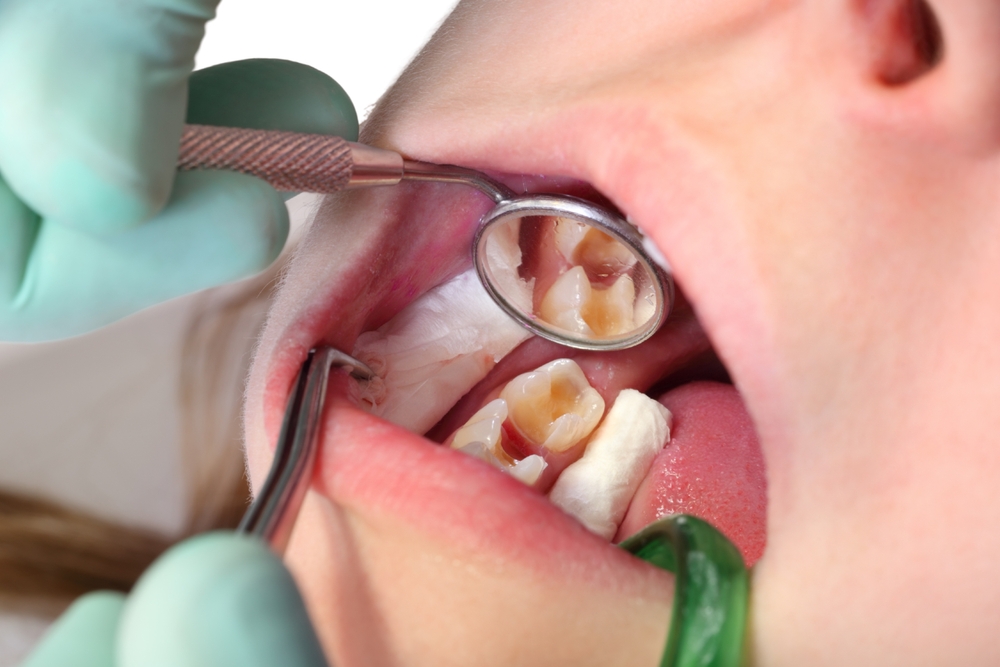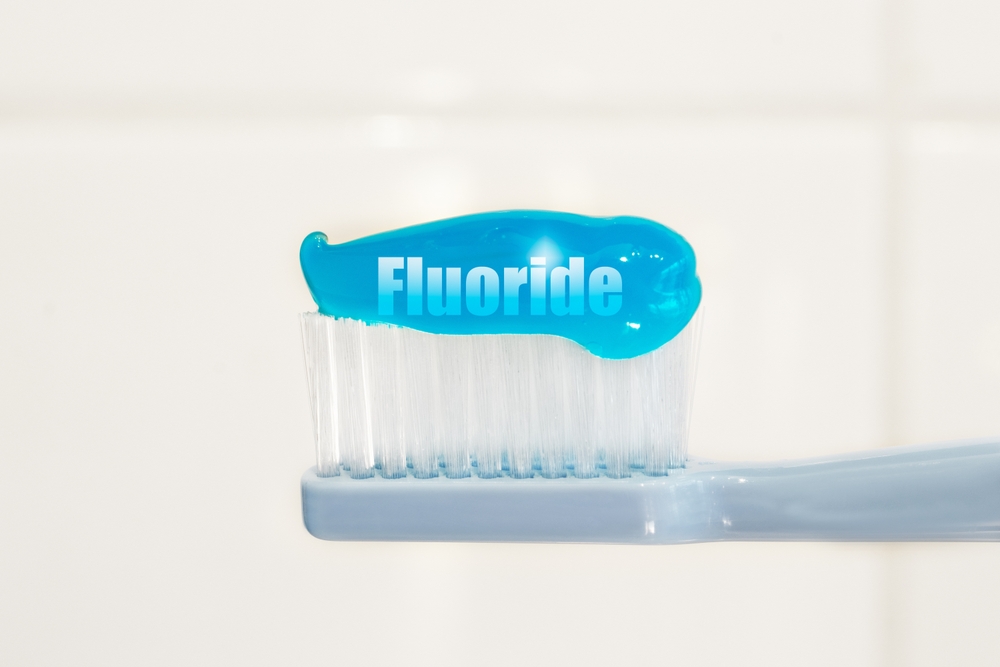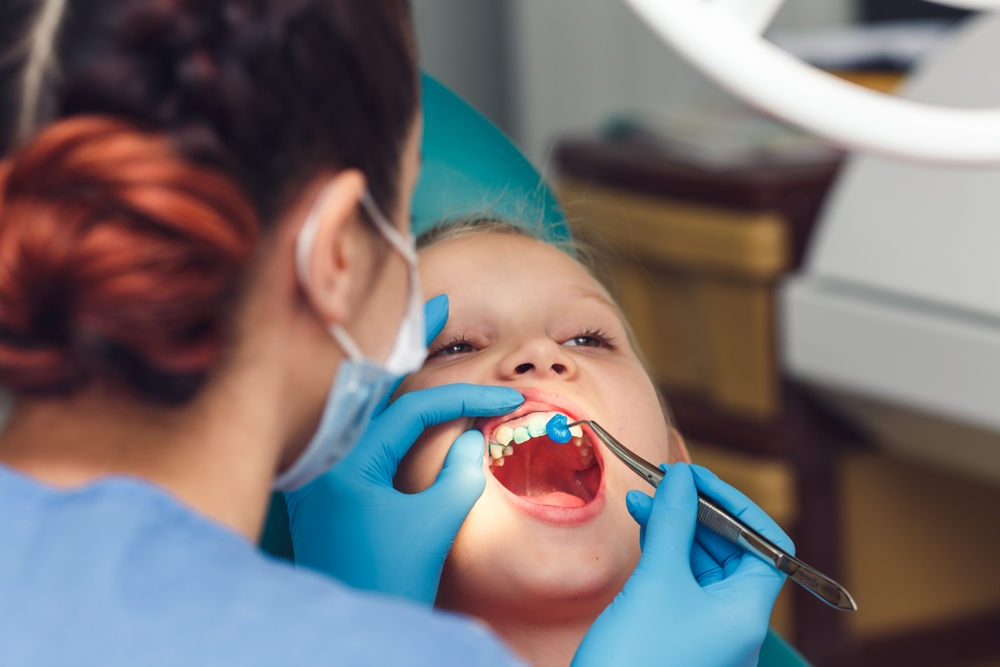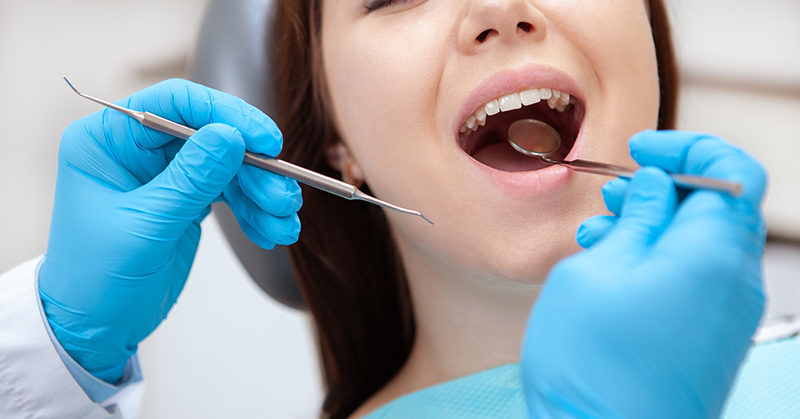Anyone who’s ever had to go to the dentist to fix a cavity knows that it can be a fairly unpleasant experience. Most people don’t enjoy having freezing needles and drills in their mouths. Imagine, then, if you could stop tooth decay associated with a cavity without drills, freezing, or an hours-long trip to the dentist.
You may not know it, but this is possible. With silver diamine fluoride, you can stop tooth decay and prevent a cavity using only a drop of liquid.
Stopping Tooth Decay with Silver Diamine Fluoride

Dentists in other countries have been using silver diamine fluoride for decades, but it has only recently been approved for use in the United States. According to Dr. Amr Moursi, chair of the pediatric dentistry department at the New York University College of Dentistry, the clear liquid has the potential to be a “game-changer”. He says that it gets people out of pain, and buys them some time by stopping the progression of the decay process.
“You simply just put this drop of liquid on a cavity and within a matter of few minutes, we see the surface that was kind of soft and spongy become firm and hard,” Moursi said [1].
Silver diamine fluoride (SDF) is made up of four key ingredients:
Silver: helps kill bacteria
Water: the liquid base
Fluoride: helps remineralize (rebuild) the tooth
Ammonia: helps concentrate the solution to maximize its efficacy against cavities [2].
Although dentists in Japan have been using SDF for more than eighty years, the FDA only approved the product in 2014 [3].
Read More: Stem Cell Dental Implants May Replace Dentures In The Future
Stopping Tooth Decay & The Benefits of SDF

SDF has a number of benefits that help dentists treat tooth decay and cavities without causing discomfort to their patients:
- Stops cavity development after a cavity has formed (called “carries resistance”)
- It kills the bacteria that break down tooth surfaces and prevents them from spreading to other teeth.
- It doesn’t require freezing or a drill, so it is more comfortable for patients. This is particularly helpful for children, people with anxiety surrounding dental care, or people with special healthcare needs.
- Can keep cavities to a minimum or prevent them altogether.
- It’s a quick procedure that only needs to be done once per year.
- It’s inexpensive (it is about ten times cheaper than a traditional filling) [2,4]
Dr. James Nickman is a dentist based in St. Paul, Minnesota, and past president of the American Academy of Pediatric Dentistry. He says that SDF may be the single greatest innovation in pediatric dental health, aside from fluoridated water, in the last century. SDF is a particularly good option for people who can’t always get to a dentist or who don’t tolerate traditional dental work well. This could include older adults in nursing homes, cancer patients undergoing chemotherapy, and people with disabilities.
The most important benefit of SDF, however, is that it works. Studies show that it quickly and safely stops tooth decay in about eighty percent of cases [5]. SDF kills the bacteria that caused the cavity in the first place and strengthens the tooth where the cavity started. “It stops the cavity from progressing. It doesn’t make it better, but it does keep it from continuing to grow larger and deeper where it can get into the pulp where the blood vessels and nerves are,” Moursi said [1].
Read More: Scientist May Have Discovered a Drug that Fixes Cavities and Regrows Teeth
The Drawbacks

The majority of dentists consider SDF to be safe for all patients, including children. That being said, it is not a good option for you if you have a silver allergy, oral ulcerations or canker sores, advanced gum disease, or major tooth decay that’s exposed to the soft tissue of your tooth beneath the enamel [5].
The most common issue with SDF is that it tends to stain the tooth where the cavity is present. This poses an aesthetic problem, particularly if there is a cavity in one of your front teeth. If the cavity is in the back of the mouth, many people will likely opt for an SDF treatment as opposed to having a drill in their mouth. While it has many benefits, SDF is not an effective treatment for any deep tooth problem that affects the nerve. “If a tooth needs a root canal, it still needs a root canal,” Messina noted [1].
Ask Your Dentist About SDF

Because it’s still so new, many dentists won’t recommend SDF to stop tooth decay. According to the American Dental Association, eighty percent of dentists have never used the treatment [6]. For this reason, you will likely have to bring it up to them yourself. SDF will likely become more common over the next few years, particularly in the COVID-19 age of non-invasive cavity management.
Of course, it is always important for a dentist to assess your tooth first to determine if SDF will be a beneficial treatment for you. It is not a perfect treatment, and it won’t completely solve every problem, but it certainly offers an opportunity for dentists to stop tooth decay without a painful drill.
Read More: Here’s What You Need to Know About Tonsil Stones
Sources
- https://www.today.com/health/silver-diamine-fluoride-treating-tooth-cavities-without-drilling-t195501
- https://onlinelibrary.wiley.com/doi/full/10.1111/idj.12320
- https://www.accessdata.fda.gov/scripts/cdrh/cfdocs/cfpmn/pmn.cfm?ID=K102973
- https://www.ncbi.nlm.nih.gov/pmc/articles/PMC4778976/
- https://www.ncbi.nlm.nih.gov/pmc/articles/PMC6500430/
- https://www.ada.org/en/publications/ada-professional-product-review-ppr/current-issue
.

